Corporate Philanthropy Council Holds Tokyo Meeting to Build ASEAN Network
The Corporate Mecenat Council held the "Tokyo Conference: The Role of Companies in Arts/Culture Promotion and Social Creation - Towards Building an ASEAN Network" at Bellesalle Tokyo Nihonbashi in Chuo Ward on May 27.
In the field of corporate patronage activities supporting arts and culture, Japanese companies have developed new approaches leveraging their unique management resources and tackled a wide range of social issues. In recent years, the Council has been advancing collaboration with Southeast Asia, responding to the growing awareness of corporate patronage in the region. Based on the Council's concept of a "Creative Economy" where culture underpins the economy, the conference featured diverse speakers sharing insights on the role businesses can play in promoting social innovation through arts and culture.
Ken Watanabe, Head of the Naoshima Business Office at Benesse Holdings, reported on the activities of the Benesse Art Site Naoshima, a 30-year collaboration between his company and the Fukutake Foundation. He described how the initiative fostered exchanges between elderly residents of small islands, young urban dwellers, and international visitors. During the years of the Setouchi Triennale, the scale expanded to attract over one million visitors, significantly enhancing the Setouchi region's visibility and brand power through art. Winner of the 2006 Mecenat Grand Prize for "Continuous Art Activities on Naoshima, Kagawa Prefecture."

Next, Krittya Kawiwong, Artistic Director of the Jim Thompson Art Center in Thailand, took the stage. The Jim Thompson Foundation originated from a Thai silk industry enterprise founded by an American businessman and military officer stationed in Thailand during World War II. The center is also one of Bangkok's premier tourist destinations. He introduced activities promoting contemporary and traditional art, as well as deepening mutual understanding between Thailand and the world, including projects with New York's Guggenheim Museum.
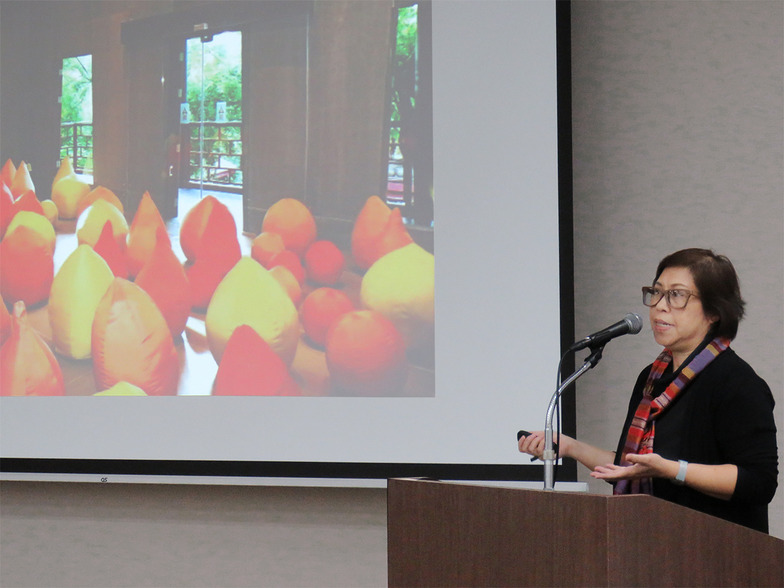
From Malaysia, Ms. Yaterah Zainal Abidin, Director of the Syam Darby Foundation, participated. The foundation began its activities in 1982 by establishing a scholarship program. In the arts and culture sector, it organizes art festivals, operates the "Aswala Dance Troupe" aimed at preserving traditional dance, and has established a performing arts center.
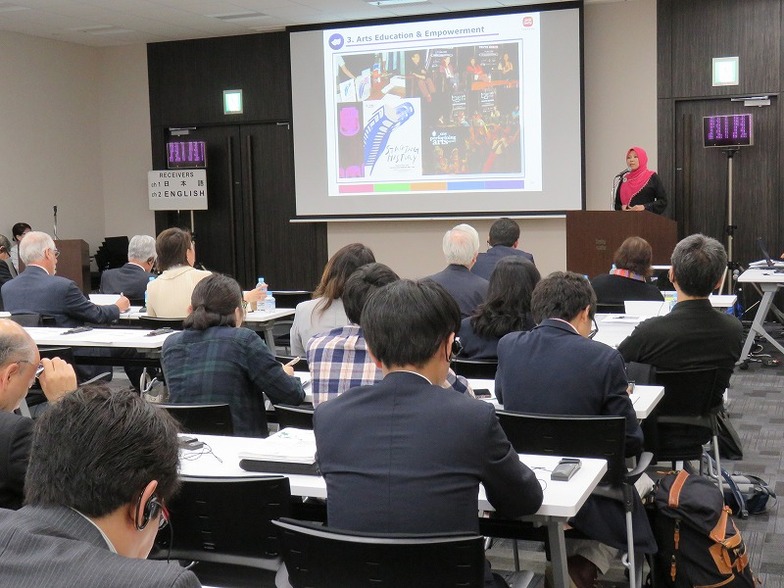
Mr. Toshiro Nakamura, President of Nakamura Brace, explained how his company, which manufactures prosthetic arms and legs in Omori Town, Oda City, Shimane Prefecture (population 400), contributed to the revival of a town once prosperous due to the Iwami Ginzan Silver Mine. He significantly contributed to the 2007 World Heritage registration of the Iwami Ginzan Silver Mine through activities preserving and managing historical materials, operating a museum, and reviving the traditional townscape. This work earned the company the 2011 Mecenat Grand Prize. The company has also established the Iwami Ginzan Cultural Award.

Mr. Suan Hwee Ong, Deputy Director of Arts and Culture Development at the National Arts Council Singapore, stated, "In Singapore, 80% of the population engages in charitable giving, but only 2.5% of donations go to the arts. We want to embed arts promotion within philanthropy and increase the value of donations to the arts." To encourage corporate and individual donations, the council operates the Public Art Trust and Cultural Matching Fund, and recognizes individuals through the Arts Patronage Awards.

Karilo Gantner, who promotes philanthropy in Australia, is the founder of Play Box Theater and also serves as its Artistic Director, actor, and CEO of an investment company. Regarding corporate involvement in the arts, he stated: "It's about ensuring leadership functions effectively and balancing interests. While companies pursue profits, art has the strength to provide enjoyable experiences for people of all ages and genders. Partnerships with the arts hold significant value."
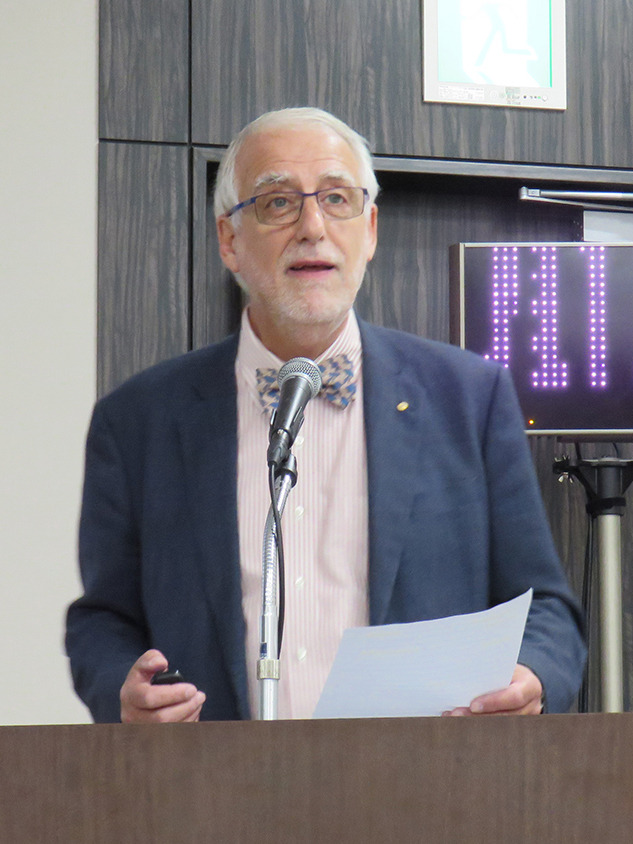
Kaori Funahashi, Head of the ICC Division at Dai-Nichi Co., Ltd. (DNP), explained that the company's corporate patronage follows the basic principle of "long-term engagement in areas close to our core business," focusing on the visual arts. As ICT development expands their business domains, DNP Museum Lab's technical patronage connects people with art and culture, advancing ongoing activities with cultural institutions toward a more enriched society. In 2015, the "Louvre – Art Appreciation Workshop Originating from DNP Museum Lab" project received the Mecenat Grand Prize.
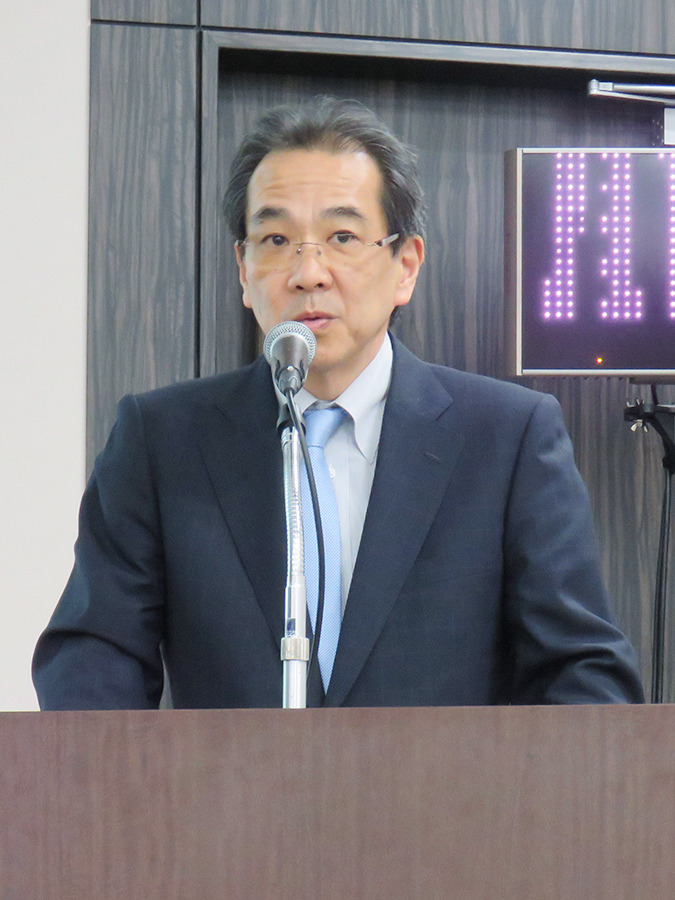
Finally, a discussion was held with Mr. Mitsuhiro Yoshimoto, Research Director at NLI Research Institute, serving as moderator. Participants shared various opinions on the significance of corporate patronage and the importance of multi-directional cultural exchange. It was confirmed that within ASEAN, understanding of the concept of patronage and corporate activities in this area remain insufficient. By continuing to hold such meetings and expanding networks, it is vital to share respective initiatives and further elevate patronage activities.

Malaysia's Marco Kusmawijaya, who joined the discussion, stated, "Art is necessary in the process of societal change. It brings about change that is creative and diverse in perspective, not disruptive change."
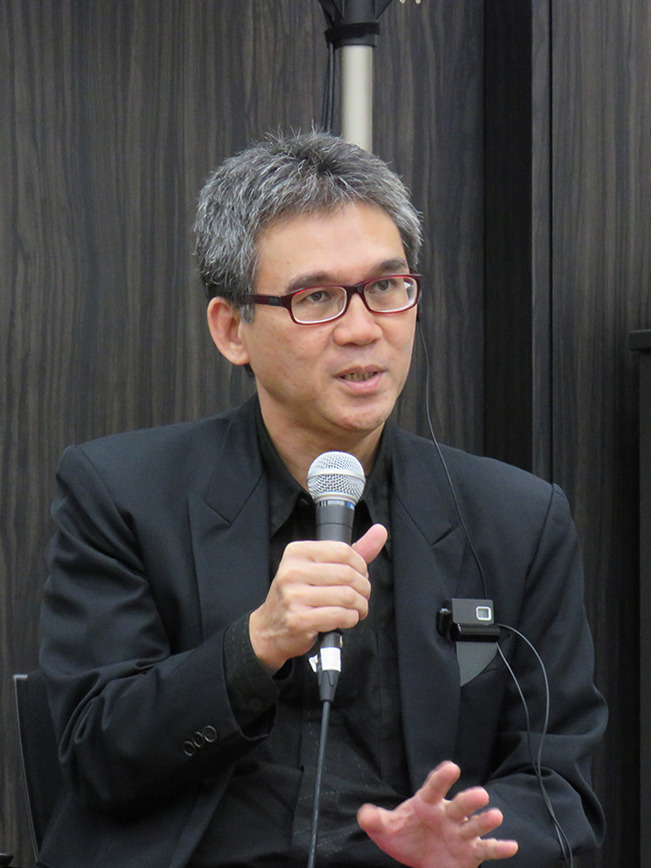
Additionally, on the same day, the Council signed a memorandum of understanding with My Performing Arts Agency Malaysia (MyPAA) to establish the "Corporate Philanthropy Council Malaysia." At a meeting to be held in Malaysia on August 24, the council will introduce Japanese corporate patronage, confirm its importance, and aim to build an ASEAN arts and culture promotion platform through the establishment of the Corporate Patronage Council Malaysia, with participation from governments and companies in Japan, Malaysia, and other countries.
To further activate the dissemination of Japanese corporate patronage and mutual exchange with Southeast Asian countries, the Council has conducted patronage surveys and hosted international conferences in ASEAN from 2015 to 2018.
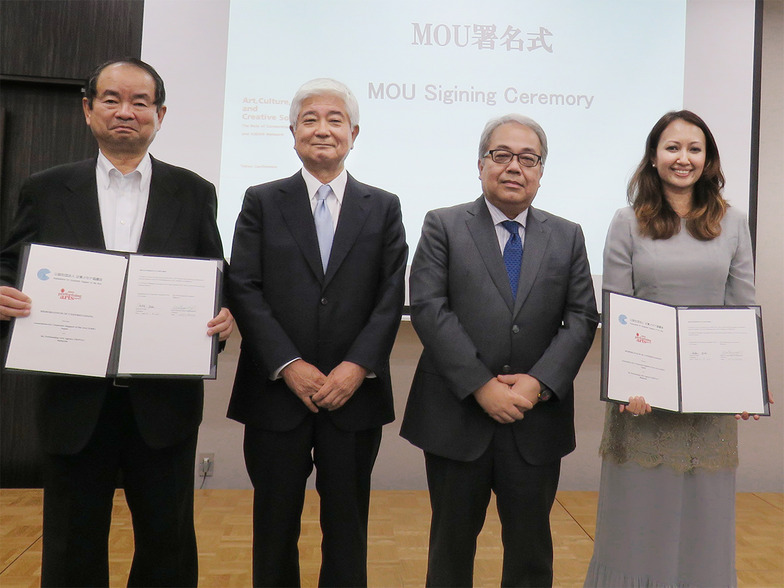
Was this article helpful?